Neil Armstrong Biography
Neil Armstrong
| Neil Armstrong | |
|---|---|
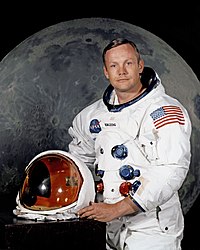 "Armstrong" | |
| Birth | 5 August 1930 Vacoponetta , Ohio |
| The death | August 25, 2012 (age 82) [1]Cincinnati , Ohio |
| the nationality | American |
| other names | Neil Aldon Armstrong |
| Got education | Puru University (BS) 1955 University of Southern California (M.S.) 1970 |
| Business | Astronomer |
| Fame reason | First person to step on the moon |
| Award | PRESIDENTAL MADAL OF Freedom Congressional Space Medal of Honor |
Neil Aldon Armstrong (5 August 1930 - 25 August 2012) was an American astronaut and the first person to step on the moon . [2] Apart from this, he was also an aerospace engineer, naval officer, test pilot, and professor. They were in the Navy before the astronaut was formed. While in the Navy, he participated in Korea war. Naval took the graduation from the University of Purdud and then joined a Duden Flight Research Center and filled more than 9 00 flights as a test pilot. After getting the services here, he got a master's degree from the University of South Carolina.
Armstrong is primarily known as the first person to step on the Moon as the Apollo campaign astronomer. Earlier, he had also traveled during the Gemini campaign. [3] Apollo 11 was the campaign, in which, for the first time in July 1969, a vessel with humans on the moon landed and Armstrong was its commander. In addition to this, Buzz Aldrin, who became the second person to land on the moon, and Michael Collins, who was sitting in the main yachts in the moon's orbit, were included.
Armstrong was conferred with the Presidential Medal of Freedom at the hands of President Nixon for his achievements, along with his teammates . President Jimmy Carter gave him the Congressional Space Medal of Honorin 1978 and Armstrong and his colleagues were given the Congressional Gold Medal in the year 2009 .
Sequence
Early life [ edit ]
Neil Armstrong was born on August 5, 1930 in Vacaponeta, Ohio. His father's name was Stefan Armstrong, and mother's voice was Louis Angel, [6] [7] and two other children of his parents were younger in June and Dean, from Neil. Father Stephen was an auditor who worked for the Ohio government [8] and his family continued to travel in many towns of Ohio for this reason. After the birth of Neil, they migrated to almost 20 towns. Meanwhile, Neil's interest grew in air flights. When Neil was five years old, his father boarded a Ford Trimotor plane with him on 20 June 1936 in Warren, Ohio, and Neil experienced the first air flight. [9]
Finally, his father's transfer took place in 1944 in the same Vaponnata town where Neil was born. Neel started going to Government High School in Education and started taking the first lessons on the fly on Vaponnetta Grassy Airfield. [7] Neel received a student flight certificate on his 16th birthday and in August of the same year he took his solo flight; That was when he did not even have a driving license right now. [10]
Neil started studying Aeronautical Engineering at the age of seventeen in 1948. He was the second member of his family receiving a college level education. [11]
Work in Navy [ edit ]
Armstrong was called on 26 January 1949 from the Navy and he trained eighteen months at Pensacola Navy Air Station. A few days after completing 20 years of age, they got Naval Pilot status. [12]
His first assignment as a naval flight was in Fleet Aircraft Service Squadron 7 in San Diego.
Along with being a space passenger, Armstrong was also aerospace engineer, naval aircraft driver, test pilot and a professor of the university. Prior to the moon mission, he also served as a Navy Officer and played an active role in the Korean War.
During the war, he received the first flight of flight during the Korean War when he flew it on August 29, 1951. It was a flying flight to capture a picture. [13] Five days later, on September 3, he took the first armed flight. [14]
Armstrong took flight during 78 missions in Korea war and spent 121 hours in the air. During this war they got 'Air Medal' for the first 20 missions, 'Gold Star' for the next 20 and Korean Service Medal. [15]
Armstrong left Navy at the age of 22 and became Lieutenant (Junior Grade) on August 23, 1952 in the United States Navy Reserve. Here he continued to serve for the next eight years and retired from here in October 1960. [16]
After Navy [ edit ]
After returning from the Navy, Armstrong continued his studies at Purudu University and in 1955 he received the degree of Science Bachelor (BS) in Aeronautical Engineering. [16] In college, he met Elizabeth Sharon, who was taking home economics education there. They were married on January 27, 1956. Sharon could not complete his degree, after which he was very pissed off. [17]
Neil and Sharon had three children: Eric, Karen, and Mark. [18] In June 1961, daughter Karen was diagnosed with tumor in the brain, and due to poor health conditions due to her death in January, 1962, she died from pneumonia, then she was two years old. [19]
Later, in 1970, Armstrong received his masters degree in Aerospace Engineering from the University of South Carolina. [20] In the future, many universities gave several degrees to Honorary Doctorates. [21]
Astronomical career [ edit ]
Armstrong was chosen for the Man in Space Sorcerer Program by American Air Force in 1958 . After this he was selected as a test pilot of the X-20 Diana-Sohar in November 1960 and later in 1962 in seven pilots who had the possibility of space travel when the design of this vehicle was completed. [22]
Gemini program [ edit ]
Gemini 8 [ edit ]
The crew for the Gemini 8thun was announced on September 20, 1965, and Neil Armstrong was named its pilot and pilot David Scot. This mission was launched on March 16, 1966. This was the most complex mission of his time in which an unmanned vehicle was to be left before the agency and Titan II , in which Armstrong and Scott were aboard, had to be connected to space. [23]
After about six hours of reaching the class, these two vessels were added. [3] However, during this time there was some technical problem and criticism of Armstrong's decision in dealing with this problem was also done. [24]
Later ( Jane Cranz ) wrote that the crew did exactly as they were trained, they made a mistake because we gave them wrong training. The planers did not think this basic thing was that when the two planets connect with each other, they would have to follow after assuming it as a vehicle. [25]
Armstrong himself too was depressed due to this [26] because the duration of the operation was reduced and most of his targets were canceled.
Gemini 11 [ edit ]
The last role in Armstrong's Gemini program was the backup-command pilot of Gemini 11. It was announced after Gemini 8's return to Earth two days later. After this Armstrong was in the role of a teacher to a large extent due to the experience of two successful campaigns. [27] It was launched on September 12, 1966, [28] Pete Konrad and Dick Gordon were aboard this vehicle, and Armstrong played his role as a capsule communicator. This campaign was completely successful in achieving its set goals.
After this flight, President Johnson sent Armstrong and his wife on a goodwill visit to South America. [29] In another tour, Armstrong, Dick Garden and George Low, all of them traveled to 14 major cities in 11 countries.
Apollo program [ edit ]
Apollo 11 [ edit ]
Armstrong had worked in the Apollo 8 campaign and after that he got the proposal to make him the commander of Apollo 11 on December 23, 1968. [30] According to the plan Armstrong was to be the commander's responsibility, the pilot of the Lunar module Buzz Aldrin and the pilot of the command module Michael Collins had to be. [31]
In a meeting in March 1969, it was decided that Armstrong would be the first person to land on the moon. There was also a role in this decision that NASA management believed that Armstrong was a humble person. [32] At a press conference on April 14, 1969, it was reported that the design of the Lunar module was such that it had to open its door in the right side and this was the reason why the pilot sitting on the right was difficult to land first. It was also said that according to the protocol, Armstrong, who was the commander of the campaign, should be given an opportunity to land first. [33]
Journey to the Moon [ edit ]
During the Apollo 11 launch, Armstrong's heart rate reached 110 pulsatrons per minute. [34] Armstrong's first phase seemed to be the most loud, much more than the previous Gemini 8 Titan II launch. Apollo's command modules must have more space than Gemini. It was probably the reason that due to being more space, its passengers did not have to face space sickness . [35]
The goal of Apollo 11 was to get away with accuracy rather than accurately at a particular place. After three minutes of landing at the moon, Armstrong felt that his speed plan is more than a few seconds, and the eagle probably will go several miles away from the selected site according to the plan. [36] Some computer error alarms were also encountered when the landing's radar of the eagle received surface statistics. The first warning came in the form of error 1202 , and, despite its extensive training, Aldrin or Armstrong did not know what it meant. They immediately received a message from Capsule Communicator Charles Duke that these error warnings are not a matter of concern and they are due to computer overflow.
When Armstrong targeted that they were going out of the Safe Landing area, they took control of the Lunar module and tried to find a place where it was not safe. This work was expected to take some time and it was also a matter of concern [37] as it was feared to fuel the Lunar module's fuel. [38] After the landing, Aldrin and Armstrong felt that they had 40 seconds of fuel, in which they also included 20 seconds of fuel, which was also to save the case of abortation of the mission. [39] Analysis of post-mission analysis found that fuel balance was left for about 45 to 50 seconds. [40]
Landing on the moon surface 20:17:40 A few seconds after UTC , on July 20, 1969, [41] when one of the three long probes associated with three of the four feet of the lunar module, exposed to the surface of the moon Inserted and lighted indicator light inside the module and Aldrin announced the "contact light". Armstrong instructed to stop the engine and after examining the landing system for a few seconds, Armstrong announced, "Houston, the transit base is at the Eagle Has Landed." [Note 1] Aldrin and Armstrong shook hands with each other and patted them. [42] [43] [44] A few seconds later, Duke conveyed the message receipt from the ground contact site. [39]
Moon speech [ edit ]
However, according to NASA's official plan, the crew had to rest for some time before the extra-vikular activity (after the action of the vehicle) after landing on the Moon, Armstrong urged this work and to move first. Once Aldrin and Armstrong were ready to go out, Eagle was free of barrage and the door was opened. Armstrong landed on the stairs.
Standing down on the ladder, he said, "Now I am going to descend from the AIIM" (they meant the Apollo Lunar module). After this he turned and left his left foot on the surface of moon 2:56 UTC July 21, 1969, [45] and said these famous words, "That's one small step of [a] man, one giant leap for Mankind" [ Note 2] [46]
When Armstrong announced that, this moment was broadcast live by the Voice of America and the broadcast was reprinted all over the world by the BBC and other major stations. According to an estimate, about 45 million listeners of the whole world, [47]became a witness to this moment by radio (estimated that the total population of the world at that time was 3.631 billion). [48]
About 20 minutes after stepping on the Moon, Aldrin landed and became the second man to step on the moon. After this, both of them traveled together on the surface of the moon. He also drove the American flag on the moon's land. To keep the flag open, a metal rod was attached to its penalty and after the opening of this flag in the packing, it appears to be lightly wavy, as if there was a wind of wind blowing. [49] After a while, President Nixon spoke to these astronomers through telephone from his office. He talked for about a minute and Armstrong responded for the next thirty seconds. [50]
After installing the scientific testing package, Armstrong went there while strolling, which is now called the Eastern Crater, who went up to 65 yards (59 m) east from the Lunar module. The total time spent in the out-of-work (EVA) was about two and a half hours. [51] [51]
In an interview given in 2010, Armstrong said that NASA only kept this period for two and a half hours because they were skeptical about how spacesuits would behave in the high heat of the moon. [52]
Return to Earth [ edit ]
When Armstrong and Aldrin returned to the Luner module, the door was closed and sealed. During the preparation of the command module to reach Columbia , they found that the switch to switch their engine was broken. Through a part of the pen, he introduced the circuit breaker and launched the launch chain. [53] After this, the Lunar module took off and associated with Colombia . The three astronauts came back to Earth and fell into the Pacific Ocean from where they were picked up by USS Hornet. [54]
For 18 days these passengers were kept in quarantine so that it could be tested that they did not receive any disease or infection from the Moon. [55]
Later life [ edit ]
After Apollo 11, Armstrong announced that they do not want to go into space travel again. [56]In 1971, he took full retirement from NASA. [57] He took the responsibility of teaching aerospace engineering at the University of Cincinnati [58] [59] Here he taught eight years of teaching and retired in 1979. [60]
In later days, he was also a member of NASA's failed campaign and the team investigating the casualties. [61] In 1986, President Reagan appointed him as a member of the Rogers Commission, whose task was to investigate the reasons for the Challenger Space-Shuttle crash. [62]
Armstrong also worked as a spokeswoman for many companies, [63] and many companies were involved in the board of directors. [64]
In 1985, Armstrong (Edmund Hillary) and some other important travelers were also on a trip to the North Pole. Armstrong said that he was curious to know what the North Pole looks like on the ground because he only saw it from space. [65]
Illness and death [ edit ]
Armstrong passed bypass surgery on August 7, 2012 due to heart disease, [66] according to the report he was recovering fast, [67] but then suddenly some complications arose and he died on August 25, 2012 at Cincinnati, Ohio. done. [5] After his death, in a message issued by the White House, he was described as "not one of his own time but one of the greatest American heroes of all time". [68] [6]
Heritage [ edit ]
Armstrong received many awards and honors, including the Presidential Medal of Freedom , the Congressional Space Medal of Honor and the Congressional Gold Medal . A crater on the Moon and a asteroid of the Solar System (Asteroid) has been named after him. [70]


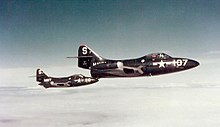
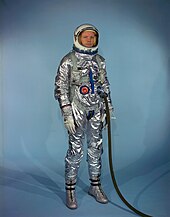
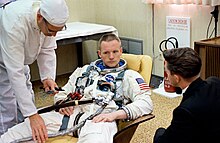
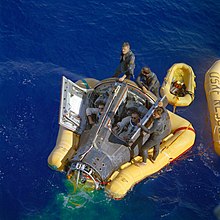







No comments